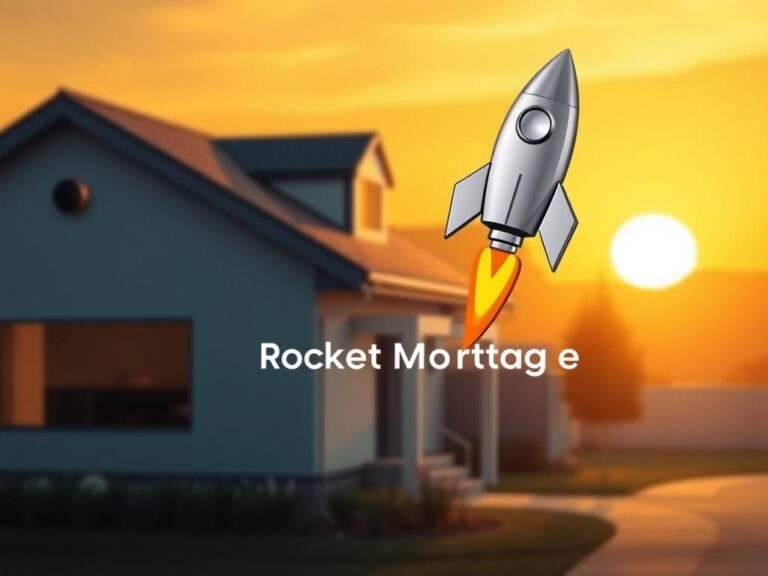Start your path to owning a home with clear steps and helpful support. You can begin online, move from prequalification to a full loan decision, and get guidance that fits your timeline and budget.
Compare your options — conventional fixed-rate, FHA, VA, and USDA loans each have different down-payment and mortgage insurance rules. Learn the programs available and how they affect your monthly payment and total borrowing cost.
U.S. Bank pairs you with mortgage officers who explain rates, benefits, and required documents. This content helps you focus on what matters: credit, income, and how much house you can afford.
Key Takeaways
- Begin your application online and move from prequalification to decision with guidance.
- Review loan types to match down payment needs and mortgage insurance rules.
- Talk with a loan officer to compare programs available and estimate payments.
- Gather income, asset, and ID documents early to speed approval.
- Understand how credit, debt, and assets affect your rate and affordability.
Why choose U.S. Bank Home Mortgage for your next home loan
When you shop for a home loan, choose a lender that pairs digital speed with real support. U.S. Bank offers a national footprint, clear information, and a suite of products offered to fit first-time and repeat buyers.
You get tailored programs — conventional, FHA, VA, and USDA options — plus targeted help like the American Dream program for low- to moderate-income buyers or neighborhoods. These choices help you pick a good option based on your payment goals and timeline.
Practical support matters. You’ll receive guidance to improve credit, streamline documentation, and meet underwriting expectations. Digital calculators and prequalification tools make it easy to estimate affordability and refine your target price.
- Transparent milestones and fee information to reduce surprises.
- Proactive updates so you know what to upload and when.
- Experience with VA and USDA rules to help access benefits you may qualify for.
Loan approval is subject to credit approval and program guidelines, and not all loans are available in every state or for every amount. Terms and rates can change without notice, so review the program details offered by U.S. Bank before you apply.
residential-loan-us-bank: programs available through U.S. Bank
Compare common mortgage options so you can pick the program that fits your timeline and budget. Below are the main choices and the benefits you should weigh when estimating monthly payments and total interest.
Conventional fixed-rate loans: predictable payments and flexible down payments
Stable monthly payments over the term and down payments from 3% make conventional loans flexible. A 20% down payment can eliminate PMI, and typical limits hover near $806,500 though regional caps vary.
FHA loans: lower credit score and down payment options
FHA requires about 3.5% down and accepts lower credit profiles. Be aware that upfront and annual MIP apply and financing the upfront MIP raises your total loan amount and interest paid.
VA loans: no mortgage insurance for eligible service members and spouses
Eligible veterans and service members may buy with little or no down payment and no mortgage insurance. You’ll need a VA Certificate of Eligibility and help from a loan officer to confirm benefits.
USDA loans: zero down options in eligible rural areas
USDA-guaranteed loans offer zero down for primary residences in rural areas (pop.
- Tip: Compare rates, payments, and qualification rules before you choose a program.
Eligibility and credit score considerations
Lenders look at your full picture, not just a single number. Your credit history, debts, and income together shape the loan options you can access and how quickly you move toward approval.
What credit score may be needed for different loan types
Conventional programs often expect a credit score of about 620 or higher when other factors are strong.
FHA loans accept lower scores with a 3.5% down payment. VA and USDA lenders consider overall profile and can be more flexible.
Debt-to-income ratio and income documentation
DTI compares monthly debts to gross monthly income. Lower DTI improves approval odds and may raise the loan amount you qualify for.
Prepare pay stubs, W-2s, tax returns for self-employment, and bank statements to verify assets and reserves.
| Program | Typical score | Key document | Special note |
|---|---|---|---|
| Conventional | ~620+ | Credit report, pay stubs, bank statements | 20% down removes PMI |
| FHA | Lower scores allowed | Pay stubs, W-2s, MIP considerations | 3.5% down option |
| VA / USDA | Flexible | COE for VA; property eligibility for USDA | Benefits depend on service or location |
- Review credit beyond the score: payment history and utilization matter.
- Improve your score by cutting revolving balances and checking reports for errors.
- Talk to a loan officer about unique income sources and assistance options if you’re on the margin.
Rates, loan amounts, and total cost of borrowing
A modest change in your interest rate can add thousands to what you pay over time. That single number affects monthly payment, APR, and the lifetime cost of a home loan.
Interest rates and APR vary with your credit score, DTI, loan purpose, and term. Improving your credit before you lock can lower your rate and reduce total interest.
Interest rates, APR, and how your score can impact your rate
Your credit score and overall credit profile influence the interest rate you receive. Small point differences in the rate change the total cost significantly.
Loan amount ranges and regional limits
Conforming limits are generally $806,500 but vary by county. FHA maximums range from $524,225 to $1,209,750 in high-cost areas.
Monthly payments, mortgage insurance, and closing costs
Your loan amount and term set the payment and total interest. Shorter terms raise monthly payments but lower lifetime interest; longer terms do the opposite.
Conventional loans usually require PMI if you put down less than 20%. FHA loans add an upfront and monthly MIP, which raises both initial cost and ongoing payment.
Closing costs include lender fees, appraisal, title, and prepaids. Plan those funds alongside your down payment to avoid delays at closing.
| Item | Typical range / note | Why it matters |
|---|---|---|
| Interest rate | Varies by score, DTI, term | Drives monthly payment and total interest |
| Loan amount | Subject to conforming/FHA limits | Determines payment size and program eligibility |
| Mortgage insurance | PMI (conventional) or MIP (FHA) | Increases monthly cost until equity thresholds or rules change |
| Closing costs | 2%–5% of loan amount (typical) | Requires cash at closing unless rolled into certain programs |
- Estimate payments with taxes, insurance, and mortgage insurance to see realistic monthly obligations.
- If you’re near a regional limit, discuss alternatives to stay within desired thresholds.
- Coordinate early with a U.S. Bank loan officer to compare rate scenarios and decide when to lock.
How to apply online: simple steps to loan approval
Begin the online application by checking your budget with a quick prequalification — it only takes a few minutes.

Prequalification to application: documents to have ready
Gather ID and income documents before you start. Upload a photo ID, recent pay stubs, W-2s or tax returns, and bank statements so underwriting can verify credit and assets.
If you plan to use VA or USDA programs, secure your VA Certificate of Eligibility and confirm property eligibility early. That prevents delays later in the process.
Quick decisions, next steps, and timeline to closing
You’ll get a needs list after the application. Your loan officer will explain terms, disclosures, and the estimated payment so you have clear information.
Quick decisions depend on timely uploads and responsiveness. After conditional approval expect an appraisal and any outstanding verifications. Once conditions clear, you’ll receive final approval and a closing disclosure.
Keep your agent and settlement officer in sync to schedule closing and confirm funds to close. Use status updates, secure messaging, or a quick call to resolve questions and keep your timeline intact.
After closing, you’ll get details on your first payment, servicing, and online account setup. Remember, loan approval is subject to credit approval and program guidelines, and terms can change without notice.
Down payment and closing cost help: programs offered by U.S. Bank and others
If you can handle monthly payments but need help with upfront costs, there are programs that reduce what you pay at closing. These options can make a home purchase practical even when savings are tight.
The American Dream program
You may qualify for the American Dream program offered U.S. Bank, which targets low-to-moderate income borrowers and LMI neighborhoods. It can provide grants or low-cost second loans to boost your down payment and lower your initial cost.
Federal, state, and local assistance
Across the United States, agencies and nonprofits offer grants, forgivable loans, and tax credits to reduce closing and down-payment costs. Availability and rules vary by state and county, and some programs require homebuyer education or property limits.
- Assistance can be a good option if your payment capacity is strong but cash to close is limited.
- Your loan officer can explain which programs pair with your chosen loan and how benefits affect payment and cost.
- Start applications early—funding timelines and documentation requirements vary and must align with your closing date.
With more down payment, you may be able to lower your monthly payment or remove PMI sooner on conventional loans. Keep records of approvals and coordinate with the closing agent so funds appear correctly on final disclosures.
When a personal loan for home improvement may be a good option
A no-collateral installment loan can be a practical choice when you want steady payments and a quick funding path for home projects.
No-collateral installment loans from U.S. Bank National Association
These unsecured loans require no lien on your house, no inspection, and no appraisal. That can speed closing compared with equity-based options.
APR ranges, terms, and amounts you may be able to borrow
As of July 21, 2025, APRs ranged from 8.74% to 24.99% based on your credit, chosen loan amount, term, and autopay selection.
- You may be able to choose terms from 12 to 84 months (clients) or up to 60 months (non-clients).
- Loan amounts for clients: $1,000–$50,000; non-clients: up to $25,000.
- There are no origination fees and no prepayment penalties, so you can pay early without extra cost.
| Feature | Range / note | Why it matters |
|---|---|---|
| APR / interest rate | 8.74%–24.99% APR | Determines monthly payment and total interest |
| Terms | 12–84 months (clients); ≤60 months (non-clients) | Longer terms lower payments but raise total interest |
| Loan amount | $1,000–$50,000 (clients); ≤$25,000 (non-clients) | Choose an amount that fits your project and budget |
Approval depends on credit, debt-to-income, and credit history. Installment loans are offered by U.S. Bank National Association, a national association lender. Equal Housing Lender.
Tools and guidance to plan your home purchase
Plan your purchase with interactive tools that translate income, debts, and down payment into a clear home price range. These resources help you set realistic goals before you make offers.
Estimate affordability, payments, and potential loan terms
Use affordability calculators to align your target price with your income, debts, and savings. That keeps your search focused and reduces surprises.
Model payments under different options—conventional, FHA, VA, and USDA—to see how mortgage insurance and a small change in rate affect monthly payments and total cost.
- Explore how different amounts down change PMI/MIP and lifetime cost.
- You may able to estimate how much you’re able borrow by adjusting credit, DTI, and term assumptions.
- Compare scenarios with varied rate inputs to decide when to lock after you’re under contract.
“Save your scenarios and share them with a loan officer to validate assumptions and refine your approach before making offers.”
Review programs available in your area and the products offered U.S. to find combinations that fit your goals. Access first-time buyer information on saving for a down payment and comparing mortgages.
If you’re budgeting for updates, use the home improvement estimator to gauge project costs and ROI, then compare with a personal loan calculator for monthly payment trade-offs.
When you’re ready, connect with a U.S. Bank loan officer by phone or callback request to review prequalification, documents, and timing so your purchase stays on schedule.
Important disclosure content and legal information
Read these important disclosures so you know how program rules and approvals affect your loan outcome. This start disclosure content summarizes eligibility, pricing, and regulatory notes you should keep with your closing packet.
Start of disclosure: Loan approval is subject to credit approval and program guidelines. Not all programs are available in every state or for every loan amount. Confirm eligibility and availability early with your loan officer.
- Start of disclosure: Interest rates and program terms are subject to change without notice; review your Loan Estimate and Closing Disclosure for current costs.
- Start of disclosure content: Mortgage, Home Equity, and Credit products are offered through U.S. Bank National Association; deposit products are offered through U.S. Bank National Association. Member FDIC.
- FHA loans include upfront and monthly MIP; VA loans require a Certificate of Eligibility; USDA loans must be for a primary residence in eligible rural areas.
- Personal loan details: fixed APRs ranged 8.74%–24.99% (July 21, 2025); terms and amounts vary by profile and underwriting.
| Topic | What to expect | Who offers it | Why it matters |
|---|---|---|---|
| Loan approval | Subject to credit review and program rules | U.S. Bank National Association | Determines final loan amount and timing |
| Rates & interest | Variable until you lock; shown on disclosures | U.S. Bank National Association | Affects monthly payment and total cost |
| Program limits | State and loan-amount restrictions may apply | Bank National Association products offered | May change program eligibility |
Keep copies of all disclosure content and footnotes. Contact your loan officer if any information changes before you sign. Equal Housing Lender. Member FDIC.
Conclusion
Conclusion
You have a clear path to compare loan choices and move toward owning a home. Compare conventional, FHA, VA, and USDA programs, then get prequalified so you know your target amount and payment range.
Explore assistance offered u.s. for down payment help, use calculators to model rates and payments, and gather income and ID documents to speed review.
Request a consultation or call to speak with a mortgage loan officer who can outline options and timing. Lock a competitive rate when your offer and closing date align.
Keep your credit and score focused, prepare paperwork, and take action—then move forward with confidence toward your new home with support from U.S. Bank. Loan approval is subject to credit approval and program guidelines; terms may change.
FAQ
What loan programs does U.S. Bank Home Mortgage offer?
U.S. Bank Home Mortgage offers several programs, including conventional fixed-rate loans, FHA loans, VA loans, and USDA loans. Each program has different down payment, credit score, and mortgage insurance requirements, so you should review options to find the best fit for your situation.
How do conventional fixed-rate loans work?
Conventional fixed-rate loans provide predictable monthly payments because the interest rate stays the same for the life of the loan. You can often choose different terms and make a flexible down payment depending on lender guidelines and your financial profile.
Who qualifies for FHA loans?
FHA loans are geared toward buyers with lower credit scores or smaller down payments. You’ll need to meet FHA guidelines for credit history and provide income documentation, but these loans can make homeownership more accessible.
Are VA loans available and what are the benefits?
VA loans are available to eligible veterans, active-duty service members, and some surviving spouses. Benefits often include no private mortgage insurance requirement and competitive interest rates, subject to VA eligibility and lender approval.
What are USDA loan basics?
USDA loans support home purchases in eligible rural areas and may offer zero down payment options. You must meet location and income requirements set by the USDA and obtain lender approval.
What credit score do I need for different loan types?
Credit score needs vary by program. Conventional loans typically require higher scores, FHA allows lower minimums, and VA and USDA have their own guidelines. Your exact rate and approval will depend on your full credit profile and other underwriting factors.
How does debt-to-income ratio affect approval?
Lenders use your debt-to-income (DTI) ratio to gauge your ability to repay. Lower DTI improves approval chances and may lead to better rates. Be prepared to provide income documentation like pay stubs, W-2s, and tax returns during the application.
How do interest rates and APR impact my monthly payment?
The interest rate determines your monthly principal and interest payment, while APR reflects the overall cost of borrowing, including fees. A higher credit score generally helps you secure a lower rate, reducing monthly payments and total interest paid over time.
What loan amounts can I apply for?
Loan amounts depend on program limits, regional loan limits, your income, and the property value. Conventional conforming limits vary by county; jumbo or government-backed loans can offer different caps. A lender can give specific ranges based on your location.
What costs should I expect at closing?
Closing costs include lender fees, title services, appraisal, and prepaid items such as taxes and insurance. You may also owe mortgage insurance depending on your down payment and loan type. Ask for a Loan Estimate early to see projected costs.
How do I apply online and what documents should I have ready?
Applying online typically starts with prequalification. Have photo ID, recent pay stubs, W-2s, recent bank statements, tax returns if self-employed, and information on other debts. Prequalification gives an initial view of what you may be approved for.
How long does approval and closing usually take?
Timelines vary, but many lenders can provide quick prequalification and issue conditional approvals within days. From application to closing, expect several weeks depending on documentation, appraisal scheduling, and underwriting.
What down payment and closing cost assistance programs are available?
U.S. Bank and other organizations offer programs to help with down payments and closing costs, including the American Dream program and local or state assistance for first-time buyers. Availability depends on eligibility, income, and location.
When is a personal loan a better option for home work?
If your project is smaller, a no-collateral installment loan from U.S. Bank National Association or other lenders might make sense. Personal loans typically have higher APRs and shorter terms than home equity options but don’t require collateral.
What APR ranges and terms might I see for personal loans?
APRs and terms vary by lender, credit score, and loan amount. You can expect a range of rates and repayment terms; better credit and income can secure lower APRs and larger amounts. Check rate disclosures and compare offers.
What tools can help me estimate affordability and payments?
Use online calculators for affordability, monthly payments, and amortization to estimate loan terms. Lenders also provide tools and home purchase counselors to help plan budget, down payment, and long-term costs.
What disclosure and legal information should I review?
Review disclosures about credit approval, program availability, and terms. Mortgage and installment products are offered by U.S. Bank National Association; interest rates and terms can change without notice. Confirm Equal Housing Lender and Member FDIC information with your lender.
How do changes in rates affect my loan choice?
Rising rates can make fixed-rate loans more attractive for payment stability. If rates drop later, refinancing may be an option. Compare current rates, APR, and program features before deciding to lock a rate.



